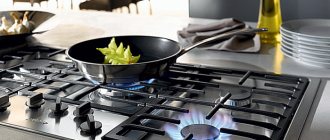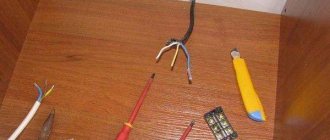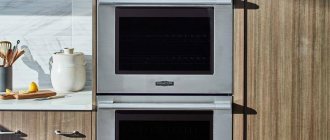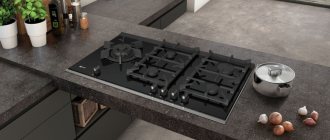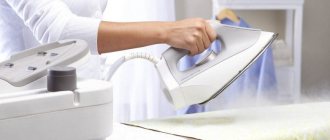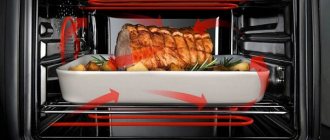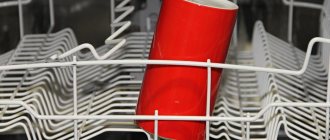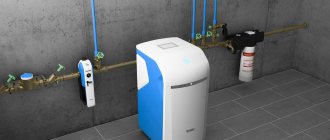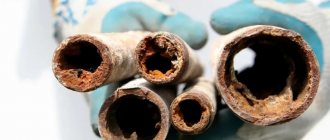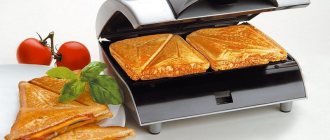General principles of care
The most correct option for caring for an electric stove is constant cleaning, which consists of regular wiping with a damp cloth after finishing cooking. But if you still cannot avoid the appearance of stains, and carbon deposits appear on the hob, then when the opportunity arises, you should start cleaning the device. Here it is important to know how to properly clean an electric stove without causing damage to it.
The principle of cleaning the electric stove and the preparations used depends on many factors:
- characteristics of the material;
- type of pollution;
- availability of additional components.
What not to do
Before considering methods for cleaning the stove and the materials that will be used, you need to understand for yourself what is prohibited from doing when cleaning the stove.
- Some housewives mistakenly think that heating the burners will help speed up and make it easier to clean up burnt-on food debris. To some extent this is true, but with this option you can simply damage the coating. For example, it will crack or become scratched. Therefore, even during preventative cleaning, you must wait until it cools completely.
- Do not scrape burnt-on food with metal scrapers, brushes or knives.
- Do not allow plastic elements of cookware to come into contact with a hot burner: if the plastic melts, it is very difficult to get rid of the marks. Below we will talk about one of the ways to remove plastic.
- You should not use aluminum cookware, as when heated it leaves marks on the burners that in most cases cannot be removed. If there is a need to use such dishes, then you need to buy a disk as an adapter or a grid.
- The surface of the electric stove is very susceptible to the use of low-quality cookware. If it leaves scratches, you should completely abandon it.
It is easier to get rid of dirt, including carbon deposits, at the moment it appears. Here, you can use any cleaning gel or dishwashing liquid as a product. It is spread with a sponge onto the contaminated area, left for 5-10 minutes, then washed off with water. To prevent streaks from appearing, remove moisture with a dry cloth. It is worth noting that all these tips are also relevant for cleaning induction cookers.
How to clean a glass-ceramic electric stove?
The easiest cleaning procedure:
- It is necessary to moisten the cloth in warm water and apply a little dishwashing detergent to it. After this, apply the product to the stove and wait 30 minutes. You don't need to put in a lot of effort or use wire scrapers. It is these products that can leave scratches on glass-ceramic surfaces.
- After this, rinse everything with plenty of water. To make the stove shine, use glass or window cleaner. Please note that to clean the stove you will need to have a separate cloth made of microfiber, as such cloths are excellent at removing dirt and also preventing the formation of streaks.
- What to do if there is severe dirt on the stove that has burned? Try applying regular dishwashing detergent, but do not wash it off immediately, but leave it for 30-40 minutes. After that, try cleaning everything with a damp cloth. If this does not help, start using special glass ceramic cleaning products.
Dirty hob
How to Clean a Stainless Steel Stove
Of course, a stainless steel electric stove looks very beautiful and impressive, but the polished coating quickly becomes covered with streaks and various stains. The easiest way to remove fresh dirt is to apply any appropriate soap solution to it and leave it for a certain period of time. If the coating is thick and strong enough, then you need to remove the soap solution and stain only after half an hour. The metal reacts well to any drugs, even with the most caustic composition.
If the situation is hopeless and you can’t clean the stove with a simple sponge and detergent, then as an exception you can use a brush, a wire sponge and paste. But this should only be done in rare cases.
How to care for a glass ceramic hob
Glass ceramics is a modern high-tech, aesthetically attractive material with many advantages and one significant drawback. It is delicate, fragile, you need to use and care for it carefully, following certain rules. During operation, grease stains, carbon deposits, and smudges inevitably appear on the surface. Keeping the panel clean is important not only for its attractive appearance, but also for maintaining its technical qualities.
The glass-ceramic panel must be cleaned according to an algorithm.
- The stove must be disconnected from the power supply.
- You need to walk directly over the hot surface with a special scraper to remove carbon deposits.
- Using a soft sponge or cloth, apply a detergent solution to the surface, paying attention to contaminated areas.
- The detergent must be removed with clean water. Rinse off until all the product is removed.
- Next, you should use a special glass and mirror cleaner and use it to polish the panel to a shine.
Glass ceramic care
To keep glass ceramics clean, you need to have at home:
- special scraper for glass ceramics;
- a soft sponge without abrasive;
- a cloth (preferably microfiber);
- detergent (without abrasive components);
- dry rags for the final stage of cleaning.
Some slabs come with a special scraper. If not, it must be purchased separately. These scrapers have a thin metal blade. It copes well with fresh soot from sweets, dried food residues, and burnt milk.
Advice! To remove old stains, it is better to use a melamine sponge (“eraser sponge”). It needs to be moistened and the old stain rubbed. Afterwards, the surface must be washed according to the traditional algorithm.
Melamine sponge
What household chemicals are suitable for caring for glass ceramics?
Cleaning will be better and easier if you use special cleaning products. Gels, liquids and pastes are suitable for glass ceramics. It is important that the structure of household chemicals is gentle and homogeneous, without abrasive inclusions that can damage the surface . Among the products recommended for glass ceramics, it is worth paying attention to Silit Beng, Shumanit, Comet and Sanita. Users praise imported products that also do a good job of caring for panels: a branded product from the manufacturer Miele, as well as Domax, Heitmann and Toprens. This is a universal chemistry that perfectly removes stains of various types: plaque, soot, grease.
You should work with detergents in this order.
- Read the instructions, especially if there are “attention” blocks.
- You should wear gloves when working with chemicals, ensuring good ventilation in the room.
- Apply the product to the panel and use a soft sponge to rub the dirty areas.
- Clean the surface of any remaining product using a damp cloth, then wipe it dry.
Important! The detergent must be completely removed from the surface by wiping it repeatedly with a clean, damp cloth. Chemical residues during heating of the stove can damage it.
To tidy up the stove, giving it a mirror shine, you can use window and mirror cleaners. A slab polished with these solutions will look like new.
An easy way to remove stuck plastic from your cooktop
Not the most popular situation, but it still happens: a piece of plastic sticks to a heated glass-ceramic surface. It looks terrible, and removing the melted plastic is not so easy. This is how you can clean glass ceramics.
- Prepare baking soda, a dish sponge and distilled white vinegar (you can find it on the shelves under the Heinz brand).
- The hob must cool completely to room temperature.
- Plastic soot should be generously sprinkled with soda, then poured with vinegar and left for 0.5 minutes or more.
- Use a napkin to carefully remove the plastic (it will “go limp” and come off normally). It is important to do this without pressing, without rubbing, so as not to damage the glass-ceramic surface with a hard plastic piece.
- Use a clean cloth to remove any remaining dirt.
How to properly care for an electric hob
First of all, the electric hob must be regularly cleaned of food residues, stains and other contaminants. Depending on the coating, the units require different types of maintenance.
The most common are glass-ceramic, glass, and metal panels; less often - with an enamel coating. To clean each of them, you need to prepare a special non-abrasive detergent and a soft cloth or rag.
The general algorithm is the same for all types of surfaces:
- After the panel has cooled completely, wipe it with a damp cloth or sponge, removing any remaining food.
- Apply liquid cleaner in gel or spray form. The quantity must exactly correspond to that specified in the instructions.
- Remove heavy dirt using a special scraper that does not leave damage to the surface.
- Wash the panel, carefully removing any remaining detergent.
- Wipe the surface dry.
Manufacturers emphasize to housewives that when purchasing a new hob, you need to purchase suitable cookware, the size and quality of which will correspond to the new panel.
It is better to clean after each cooking. This will avoid unnecessary effort and protect the surface from scratches when removing dried or burnt stains.
Cleaning the handles
It is much easier to wash handles, switches and other small-sized elements when they are removed. They are soaked in soapy water and then cleaned with a sponge. A toothbrush will help clean dirt in hard-to-reach places. At the end, each element is rinsed and dried.
If you don’t have time for thorough cleaning, you can get by with superficial cleaning. For this procedure, it is best to take anise drops with ammonia. A cotton pad is moistened in the solution, and the necessary elements are evenly processed. After five minutes, the solution is washed off with a damp cloth, even with old stains that are difficult to remove.
Using folk recipes
If for some reason you cannot wash the device with water and cleaning solutions, then you can use other means that you have at hand. Among the most effective means are the following.
- Baking soda. The substance should not be used in dry form, as it may cause scratches. The best way to cook pasta is using water. If the stain does not disappear, then add a little vinegar to the solution.
- Vegetable oil. A rather unusual method that will help clean any material, even from carbon deposits. The oil should be distributed throughout the stain and left for 30-40 minutes. After the specified time, use a rubber scraper to wipe off the dirt. Then the remaining traces of oil are removed.
Using the tips provided, you can easily get rid of dirt on the slab for a long time and maintain its original attractive appearance. It should be noted that housewives often have problems with cleaning the oven. Of course, you can also use folk remedies or household chemicals for this. Or you can simply buy a stove with a pyrolytic cleaning function. This method perfectly fights greasy deposits without the need to use any effort. In comparison with catalysis and hydrolysis methods, it is the most modern and convenient.
Clean electrical deposits from carbon deposits
Cleaning a kitchen electric stove from carbon deposits is not as easy as it seems at first glance.
How to wash a particular surface largely depends on what kind of base the electric stove has.
For enamel surfaces, choose gel or liquid detergents.
Some folk methods of combating plaque will also not be superfluous:
- To remove minor stains, apply dishwashing detergent to the surface of the kitchen stove, leave for a while, then wipe and enjoy the cleanliness;
- Prepare a paste from soda and water, apply to the most dirty surfaces of the kitchen stove, then dissolve one teaspoon of ammonia in one liter of water and wipe the work surface with the resulting mixture, wipe dry with a cotton rag;
- To prepare the following solution, use one tablespoon of office glue, 1 teaspoon of washing powder and 3 tablespoons of soda ash, mix everything in a glass of cold water, pour the solution on the surface of the stove for 10-15 minutes, rinse with clean water.
This is interesting: How to choose a Karcher machine for cleaning carpets and sofas.
GOI Paste and polishing with felt discs (attached to a screwdriver) will help you clean the ceramic surface of a kitchen stove from traces of hookah coals!
Cooking surface from fat
Grease on your kitchen stove is a common occurrence. Moreover, getting rid of “fresh” stains is much easier than getting rid of old ones.
Wipe down your tiles every evening with regular dishwashing detergent or lemon juice and your stove will be sparkling clean.
If you do launch your “assistant”, read these recommendations:
- A soap and soda solution is considered an excellent way to combat fat. Mix a few tablespoons of soda with liquid soap, add water and apply the resulting mixture to the surface of the stove, wait 10-15 minutes and wipe dry;
- If your home has a steam cleaner, then by treating the cooking surface of the kitchen stove with this device for 5-7 minutes you can achieve a perfectly clean surface;
- Pay attention to modern household chemicals. Many detergents are really effective at removing grease in just a couple of minutes.
Attention! When cleaning glass and enamel hobs, do not use detergents containing abrasives. This can really ruin the look of your stove!
Burnt milk from the burner
In order to remove milk, you need to thoroughly moisten the contaminated surface with water.
Then treat with soda or any other cleaning agent, wait a few hours and wipe with a damp sponge.
Plastic scrapers are also suitable for removing fresh stains from burnt milk. To combat “fresh” traces of milk, regular boiling water will do!
Important! In the fight against plaque and burnt milk, do not overdo it and do not scratch the working surface of the stove! Ceramic and enameled tiles are quite easily deformed.
Old fat on the arms
In order to remove old grease stains on handles, you can use a solution consisting of the following components:
- 250 ml water;
- 1 tbsp. l. silicate office glue;
- 30 g grated laundry soap;
- 3 tbsp. l. baking soda.
This is interesting: How to get a profitable service for renting and cleaning stain-resistant carpets
Move all the components, apply them to the contaminated surface and rinse off after a few hours, wipe dry and polish the handles. Hard-to-reach areas can be cleaned with a folded corner of a kitchen towel.
Quickly wash very dirty
The dirtiest kitchen tiles can probably only be cleaned with strong household chemicals such as:
- Help;
- Sanita - Anti-grease;
- Synergic;
- Mr. Muscle "Expert" and others.
In particularly advanced cases, it is necessary to use abrasive agents (which, among other things, are harmful to both humans and the surface).
But it is also possible to use familiar folk remedies: soda, vinegar, citric acid, anise drops, ammonia, etc.
You should look into harder sponges and toothbrushes.
You can also get rid of the oldest stains using an aqueous solution of vinegar, baking soda, citric acid and salt.
